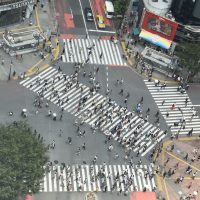 I went out to Tokyo at relatively short notice in July 2018 for a week of work, followed by a week exploring the city’s many wonderful coffee shops and generally being a tourist, although I did manage to fit in a day trip on the bullet train to the Nagano Prefecture, where I went hiking in the mountains.
I went out to Tokyo at relatively short notice in July 2018 for a week of work, followed by a week exploring the city’s many wonderful coffee shops and generally being a tourist, although I did manage to fit in a day trip on the bullet train to the Nagano Prefecture, where I went hiking in the mountains.
I flew out on Friday, 13th July, giving myself the weekend to acclimatise, then spent the following week working, although we only started on Tuesday, Monday being a public holiday. For this half of my trip, I stayed in the Excel Shibuya Hotel. On the Saturday, I moved to the APA Hotel in Nishi Azabu, where I’d stayed on my previous trip to Japan, spending six days exploring Tokyo, before flying back on Friday, 27th July.
My trip coincided with the hottest ever heatwave recorded in Japan. During my two weeks, the daytime high was never less than 29⁰C and it frequently reached 34⁰C, while it never fell below 24⁰C at nights. As result, I spent my time shuttling around between coffee shops and other air-conditioned places, generally taking things easy.
The flights to and from Tokyo are covered in the Travel Spots below, while you can also read about the Coffee Spots I visited during my two weeks in Tokyo, plus the one Coffee Spot I made it to during my day trip to the mountains.
Header Image: the view of the Tokyo skyline, looking north from my hotel room in the Excel Shibuya, with the towers of Shinjuku in the distance.
Travel Spots
You can read about the trip in the following Travel Spot posts.
Brian’s Travel Spot: Flying to Tokyo Haneda
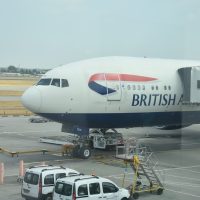 This is my second trip to Tokyo, the first one being in April last year when I made a rather hastily cobbled together visit. This year, despite having had less notice (I only found out I was going at the start of June and only had confirmation four weeks before I flew on July 13th), I managed to do a little bit more planning, although the end result was a much less ambitious trip, where I stayed in Tokyo for the two weeks I was there.
This is my second trip to Tokyo, the first one being in April last year when I made a rather hastily cobbled together visit. This year, despite having had less notice (I only found out I was going at the start of June and only had confirmation four weeks before I flew on July 13th), I managed to do a little bit more planning, although the end result was a much less ambitious trip, where I stayed in Tokyo for the two weeks I was there.
Both times I flew with British Airways, last time in economy (World Traveller) and this time, since I had the money in the travel budget, in business class (Club World). As I’ve been doing the last few times I’ve travelled, I flew to and from Manchester so that I could visit my 85 year old Dad before/after the trip. This meant taking the short hop down to Heathrow and catching a direct flight to Tokyo from there.
It was also the first time I’d flown with British Airways since it started serving Union Hand-roasted coffee in its lounges and in Club World and First Class cabins, giving me the chance to try it out.
Continue reading...Brian’s Travel Spot: Returning from Tokyo Haneda
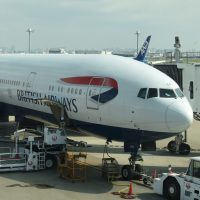 Last week I wrote about my flight from Manchester to Tokyo’s Haneda airport via Heathrow. This week it’s the turn of my flight back, on Friday, 27th July, two weeks to the day after I flew out. As I mentioned in the previous Travel Spot, Tokyo has two international airports, Haneda and Narita, with British Airways having one flight per day to each. It’s perfectly possible, by the way, to fly into one airport and out of the other, but, as with my flights over, price dictated that I flew both into and out of Haneda.
Last week I wrote about my flight from Manchester to Tokyo’s Haneda airport via Heathrow. This week it’s the turn of my flight back, on Friday, 27th July, two weeks to the day after I flew out. As I mentioned in the previous Travel Spot, Tokyo has two international airports, Haneda and Narita, with British Airways having one flight per day to each. It’s perfectly possible, by the way, to fly into one airport and out of the other, but, as with my flights over, price dictated that I flew both into and out of Haneda.
This left me on the 08:50 flight from Haneda, an entirely unreasonable time to be at an airport, let alone to be taking off from one. Since we were heading west, this was a daytime flight, scheduled to arrive at Heathrow at 13:10 local time on the same day, 12 hours and 20 minutes later. From there I had a connecting flight to Manchester at 16:00, touching down in at 17:05, a mere 16 hours after I set off.
However, before any of that could happen, I had to get to the airport from my hotel in Nishi Azabu.
Continue reading...Coffee Spots
You can read about all the Coffee Spots I visited in Tokyo on this trip (listed alphabetically).
About Life Coffee Brewers
 About Life Coffee Brewers is part of the small Onibus Coffee group which has its own roastery in Yakumo, although it also serves coffee from two other Tokyo roasters, Switch Coffee Tokyo and Amameria Espresso. No more than a coffee stand at the top (western) end of Dōgenzaka in Shibuya, it’s something of an institution and a favourite of many visitors to the city. Serving mostly takeaway customers (so don’t forget to bring your own cup), you can stand at the counter or sit on one of two benches down the side. There’s also a semi-secret sheltered standing-room only area inside, which is handy if it’s raining.
About Life Coffee Brewers is part of the small Onibus Coffee group which has its own roastery in Yakumo, although it also serves coffee from two other Tokyo roasters, Switch Coffee Tokyo and Amameria Espresso. No more than a coffee stand at the top (western) end of Dōgenzaka in Shibuya, it’s something of an institution and a favourite of many visitors to the city. Serving mostly takeaway customers (so don’t forget to bring your own cup), you can stand at the counter or sit on one of two benches down the side. There’s also a semi-secret sheltered standing-room only area inside, which is handy if it’s raining.
For such a small spot, About Life has a large output. There’s a concise with/without milk espresso menu, with the Onibus house-blend used for milk drinks and blends from the other two roasters available as espresso/Americano. However, what’s really impressive is the selection of six single-origins, two from each roaster. These can be had as an espresso (no milk) or as a pour-over through the V60. All the coffee, espresso and pour-over, can be had hot, or with ice. The selection of single-origins is seasonal, changing every two to three months.
Continue reading...Blue Bottle Coffee, Aoyama
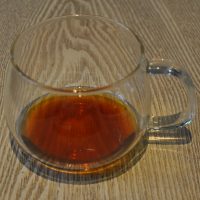 Blue Bottle Coffee is something of an institution in California, with numerous outlets in Los Angeles and the Bay Area. From its base, Blue Bottle has spread both east, with branches on the east coast, ranging from Miami to Boston, and west, where it’s crossed the Pacific Ocean to Japan, with branches in Kobo, Kyoto and as of 2019, fourteen in Tokyo.
Blue Bottle Coffee is something of an institution in California, with numerous outlets in Los Angeles and the Bay Area. From its base, Blue Bottle has spread both east, with branches on the east coast, ranging from Miami to Boston, and west, where it’s crossed the Pacific Ocean to Japan, with branches in Kobo, Kyoto and as of 2019, fourteen in Tokyo.
My relationship with Blue Bottle in the US has been a bit hit and miss, liking some places, but not others. However, based on my limited experience in Tokyo, I’m smitten by Blue Bottle in Japan. The branch in Aoyama was around the corner from my office when I visited in April last year, one of a cluster of excellent coffee shops, all within easy walking distance of the office, that include Japanese café/roaster Sarutahiko Coffee and two further foreign-influenced coffee shops, Coutume and Café Kitsuné, both of whom have their roots in Paris.
Blue Bottle serves a single-origin and blend on espresso, with another single-origin and blend on pour-over, plus two more single-origins on syphon. There’s also a concise breakfast/lunch menu and a selection of cakes. Of all the places I visited in Japan, it is the most American in terms of service and style.
Continue reading...Blue Bottle Coffee, Nakameguro
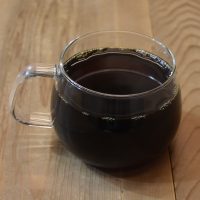 It’s weird, given how few of Blue Bottle’s US outlets meet my “places where I like to have coffee” criteria, that I’ve adored all three Blue Bottle locations that I’ve visited in Tokyo. Today is the turn of Blue Bottle’s Nakameguro coffee shop, which I first visited during last summer’s trip. It occupies a tall, narrow building, all concrete and glass, that was purpose-built as a factory. The coffee shop is at the front on the ground floor, with additional seating in a basement-like space to the rear, above which is a training area/lab. The top two floors, meanwhile, are Blue Bottle’s offices.
It’s weird, given how few of Blue Bottle’s US outlets meet my “places where I like to have coffee” criteria, that I’ve adored all three Blue Bottle locations that I’ve visited in Tokyo. Today is the turn of Blue Bottle’s Nakameguro coffee shop, which I first visited during last summer’s trip. It occupies a tall, narrow building, all concrete and glass, that was purpose-built as a factory. The coffee shop is at the front on the ground floor, with additional seating in a basement-like space to the rear, above which is a training area/lab. The top two floors, meanwhile, are Blue Bottle’s offices.
The offering’s very similar to the other Tokyo Blue Bottles that I’ve visited, with reduced food options compared to the Aoyama coffee shop. The usual espresso-based menu has the current seasonal blend plus a single-origin, with options including macchiato, Gibraltar, cappuccino and latte, along with cold-brew and iced coffee. This is allied with a strong pour-over offering, with six Blue Bottle drippers lined up on the counter-front, each standing on in-built scales. There’s a choice of a dedicated pour-over blend, plus a daily single-origin (different from the espresso). If you’re hungry, there’s cake, waffles and a panini.
Continue reading...Chatei Hatou
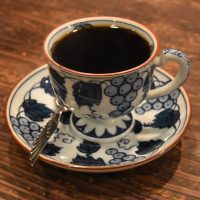 Japan has a wide, varied coffee culture stretching back to, I believe, the inter-war years. Although Japan has moved with the times, accepting and adapting modern trends in coffee, such as lighter roasting, the old traditions live on. On my first visit in 2017, I wrote about Café de L’Ambre, a traditional Japanese kissaten. I also visited Chatei Hatou (once I’d found it!) but didn’t have a chance to write it up. Since it was just around the corner from my hotel, it was another place I made a beeline for on my return to Tokyo this week.
Japan has a wide, varied coffee culture stretching back to, I believe, the inter-war years. Although Japan has moved with the times, accepting and adapting modern trends in coffee, such as lighter roasting, the old traditions live on. On my first visit in 2017, I wrote about Café de L’Ambre, a traditional Japanese kissaten. I also visited Chatei Hatou (once I’d found it!) but didn’t have a chance to write it up. Since it was just around the corner from my hotel, it was another place I made a beeline for on my return to Tokyo this week.
The traditional Japanese kissaten is more akin to a bar than a modern coffee shop. Both Chatei Hatou and Café de L’Ambre are long, low, windowless buildings where patrons are still allowed to smoke (although on both my visits Chatei Hatou wasn’t too smoky, perhaps due to the air-conditioning). Only serving pour-over coffee, the best seats are at the counter, where you can watch the coffee being made on a near-continuous basis. Alternatively, there are a number of tables, more cosy two-person ones and some larger, ten-person ones, in the relatively spacious interior. Finally, there’s an impressive range of cakes to tempt you.
Continue reading...Coffee Supreme, Tokyo
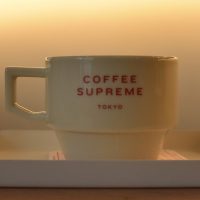 Tokyo has, I quickly discovered, a very international coffee scene, something it has in common with London, with brands from all around the world. This includes California in the USA (Verve, Blue Bottle), Europe (Fuglen, Stockholm Roast) and Australia (Single-O). New Zealand is represented by the likes of Allpress, and, since October 2017, Coffee Supreme, which opened in Shibuya, a couple of streets away from the original Fuglen.
Tokyo has, I quickly discovered, a very international coffee scene, something it has in common with London, with brands from all around the world. This includes California in the USA (Verve, Blue Bottle), Europe (Fuglen, Stockholm Roast) and Australia (Single-O). New Zealand is represented by the likes of Allpress, and, since October 2017, Coffee Supreme, which opened in Shibuya, a couple of streets away from the original Fuglen.
I first visited in July 2018, tipped off by Little Nap Coffee Stand, calling back a year later during my visit in September this year. Located in the tangle of streets north of Shibuya station, Coffee Supreme is at the southwestern edge of Yoyogi Park, occupying the ground floor of a long, extremely thin building that’s also home to a pair of Kiwi restaurants.
The coffee is from Coffee Supreme’s Melbourne roastery, with house-blend, guest and decaf on espresso, the menu including Kiwi staples such as flat white and long black. There are three monthly single-origins, one of which is on batch brew, the option changing daily, with all the beans (blends and single-origins) available in retail bags. There’s also craft beer, and, if you’re hungry, a small range of cakes, toast and pies.
Continue reading...Fuglen Coffee Roasters
 Fuglen is one of several western/Japanese hybrids which I found in Tokyo. In this case the western element comes from Oslo, where Fuglen started and is still going strong. The Tokyo offshoot opened in 2012 in the residential streets on Shibuya’s northern edge, somewhere I have yet to visit, with the Tokyo roastery, subject of today’s Coffee Spot, opening in 2014. Ironically, Fuglen only started roasting in Oslo in March this year.
Fuglen is one of several western/Japanese hybrids which I found in Tokyo. In this case the western element comes from Oslo, where Fuglen started and is still going strong. The Tokyo offshoot opened in 2012 in the residential streets on Shibuya’s northern edge, somewhere I have yet to visit, with the Tokyo roastery, subject of today’s Coffee Spot, opening in 2014. Ironically, Fuglen only started roasting in Oslo in March this year.
The Tokyo roastery doubles as a coffee shop, opening its doors to the public from Thursday to Sunday every week. It’s a lovely spot, tucked away up a driveway on a quiet street, somewhere you would never stumble upon by accident unless you were very lucky. Inside, there’s a single, open space, with the roaster at the back, and a simple coffee bar to your left, with minimal seating.
Of course, the real draw is the coffee, all single-origins, all roasted on-site. It’s all seasonal, changing every two to three months. Naturally, it’s all available to buy in retail bags. There’s one single-origin on espresso and a choice of four on pour-over, all through the Kalita Wave. And that’s it. No tea, no food, not even a cake.
Continue reading...Kaido Books & Coffee Update
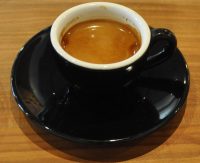 On my first visit to Tokyo back in 2017, the final part of my stay was spent in a lovely, quiet residential area just south of Shinagawa Station, where I made the chance discovery of Kaido Books & Coffee, which was a couple of minutes’ walk down the street from my hotel of my trip. Much as Nem Coffee & Espresso became my “local” for the first part of my stay (and filled the same role during the second half of my return to Tokyo in 2018), so Kaido became my “local” for the final week of my stay.
On my first visit to Tokyo back in 2017, the final part of my stay was spent in a lovely, quiet residential area just south of Shinagawa Station, where I made the chance discovery of Kaido Books & Coffee, which was a couple of minutes’ walk down the street from my hotel of my trip. Much as Nem Coffee & Espresso became my “local” for the first part of my stay (and filled the same role during the second half of my return to Tokyo in 2018), so Kaido became my “local” for the final week of my stay.
Kaido Books & Coffee does what it says on the tin: a book shop combined with a coffee shop, spread over two delightful floors, with more of a coffee shop feel downstairs and a bookshop/library vibe upstairs. I liked Kaido so much that I immediately wrote it up, posting my original piece while I was still in Tokyo.
However, due to various technical reasons, I never managed to create a gallery to go with the original post, so on my return to Tokyo last week, I popped down to Shinagawa to pay Kaido a visit and to finally complete the gallery.
Continue reading...Koffee Mameya
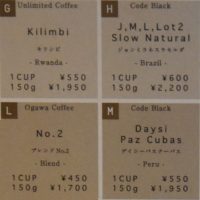 Koffee Mameya, which literally translates as Coffee Beans, is something of a name in speciality coffee circles. The successor to the famed Omotesando Koffee, a legendary pop-up coffee shop that once stood on the same physical site, going to Koffee Mameya is somewhat akin to going on a pilgrimage for the speciality coffee lover.
Koffee Mameya, which literally translates as Coffee Beans, is something of a name in speciality coffee circles. The successor to the famed Omotesando Koffee, a legendary pop-up coffee shop that once stood on the same physical site, going to Koffee Mameya is somewhat akin to going on a pilgrimage for the speciality coffee lover.
Technically Koffee Mameya isn’t a coffee shop; it’s a retailer with a tasting bar where you can try the beans before you buy. It’s also tiny, an almost cube-shaped, wood-clad, windowless box with no seats, just a counter at the back and, more often than not, a queue out of the door.
Koffee Mameya works with seven roasters, four from Japan and one each from Denmark, Hong Kong and Melbourne. There are up to 25 different beans available at any one time (there were 18 choices on offer when I visited) arranged by roast profile from light to dark. Since Koffee Mameya is all about the taste, there’s no milk here (and definitely no sugar), with the coffee available to try as either pour-over through the Kalita Wave or espresso, using a customised Synesso Hydra built into the counter-top. There are also cold-brew samples on hand.
Continue reading...Little Nap Coffee Roasters
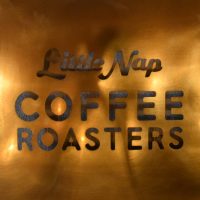 I discovered Little Nap, the Tokyo-based coffee shop/roaster chain (of precisely two locations) when I visited the original, Little Nap Coffee Stand, in the summer of 2018. During that trip I also popped over to the second location, Little Nap Coffee Roasters, a short, 10-minute walk to the southwest. However, for various reasons, I never managed to write it up, so last week, on my most recent trip, I returned to check that nothing had changed.
I discovered Little Nap, the Tokyo-based coffee shop/roaster chain (of precisely two locations) when I visited the original, Little Nap Coffee Stand, in the summer of 2018. During that trip I also popped over to the second location, Little Nap Coffee Roasters, a short, 10-minute walk to the southwest. However, for various reasons, I never managed to write it up, so last week, on my most recent trip, I returned to check that nothing had changed.
Little Nap occupies a narrow, three-storey, standalone building on the south side of the busy highway which runs through the southern end of Yoyogi Park to the east. Downstairs, at the front, is a compact coffee shop, while at the back is an equally compact roastery. The first floor is home to the Little Nap Record Shop and, during my visit in 2018, hosted a pop-up kitchen, while the top floor is a gallery with rotating displays.
Little Nap serves a house-blend from a concise, espresso-based menu, with four seasonal single-origins on pour-over (hot or cold), with all the coffee available to buy in retail bags. There’s also a small range of sandwiches and hot dogs, plus a selection of cakes if you’re hungry.
Continue reading...Little Nap Coffee Stand
 In a small corner in the northwest Shibuya in Tokyo, west of Yoyokgi Park, there’s an interesting cluster of coffee shops, including the new branch of Switch Coffee Tokyo opposite Yoyogi-Hachiman station, another new arrival, Coffee Supreme Tokyo, and old hand, Fuglen. However, one can argue the trendsetter that started it all is just a little north of the station, where you’ll find a tall, thin building backing onto the railways tracks, home, since 2011, to Little Nap Coffee Stand.
In a small corner in the northwest Shibuya in Tokyo, west of Yoyokgi Park, there’s an interesting cluster of coffee shops, including the new branch of Switch Coffee Tokyo opposite Yoyogi-Hachiman station, another new arrival, Coffee Supreme Tokyo, and old hand, Fuglen. However, one can argue the trendsetter that started it all is just a little north of the station, where you’ll find a tall, thin building backing onto the railways tracks, home, since 2011, to Little Nap Coffee Stand.
Little Nap now boasts a roastery a 10-minute walk away on the other side of the station, but this is the original, a narrow, wedge-shaped space that serves four seasonal single-origins on pour-over (hot or cold), an impressive output for an infeasibly small space. When it comes to espresso, there’s the house-blend, available as espresso, macchiato or Gibraltar (the first time I’ve seen that in Japan outside of Blue Bottle Coffee), all served hot and only available if you’re sitting in. If you want a longer drink, there’s a choice of Americano, latte (hot or iced) or cappuccino. There’s also cakes, sandwiches, ice cream and a selection of retail bags to take home with you. Little Nap’s also crammed in an impressive sound system!
Continue reading...Maruyama Coffee, Nishi Azabu
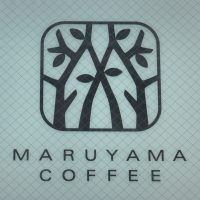 My first Tokyo coffee experience was down, in part, to the excellent Commodities Connoisseur and also to serendipity. Having done very little planning for this trip, I had picked my hotel for the first part of my stay almost at random. On arrival, I was delighted to discover that it was across the road from one of Commodities Connoisseur’s recommendations, Maruyama Coffee.
My first Tokyo coffee experience was down, in part, to the excellent Commodities Connoisseur and also to serendipity. Having done very little planning for this trip, I had picked my hotel for the first part of my stay almost at random. On arrival, I was delighted to discover that it was across the road from one of Commodities Connoisseur’s recommendations, Maruyama Coffee.
Maruyama Coffee is a roaster based in Karuizawa in the mountains northwest of Tokyo and founded in 1991 by Kentaro Maruyama. Nishi Azabu is the sixth store, one of three in Tokyo. It’s a lovely space, with plenty of seating and full table service. Although not a traditional Japanese coffeehouse (as I understand them to be), it was a very Japanese experience, far removed from the typical (western) third-wave café.
Perhaps the most surprising thing is the vast array of coffee on offer, which can be had principally through the humble cafetiere, although there are also options for Steampunk, Cores pour-over cones and espresso. If you are hungry, there is a small breakfast menu (08:00 – 10:00) and a decent selection of cake. There’s also a huge retail section, including beans, coffee-making equipment and a range of other products.
Continue reading...Nem Coffee & Espresso
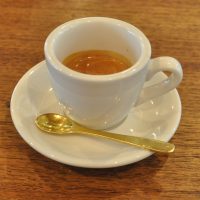 The delightful Nem Coffee & Espresso is definitely the hidden gem of Tokyo’s speciality coffee scene. Located south of the Arisugawa-no-miya Memorial Park, Nem is tucked away down a narrow, pedestrian alley, so much so that you think you’re walking into a residential neighbourhood to visit someone’s house, which is not as far from the truth as it seems. The coffee shop is on the ground floor of an old house, painstakingly renovated/converted by the owners, a married couple who live upstairs, Nem opening for business in May 2016. The result is a small, but delightful space, with windows front and back, with a very Japanese feel to the architecture, but a very western feel to the coffee shop itself.
The delightful Nem Coffee & Espresso is definitely the hidden gem of Tokyo’s speciality coffee scene. Located south of the Arisugawa-no-miya Memorial Park, Nem is tucked away down a narrow, pedestrian alley, so much so that you think you’re walking into a residential neighbourhood to visit someone’s house, which is not as far from the truth as it seems. The coffee shop is on the ground floor of an old house, painstakingly renovated/converted by the owners, a married couple who live upstairs, Nem opening for business in May 2016. The result is a small, but delightful space, with windows front and back, with a very Japanese feel to the architecture, but a very western feel to the coffee shop itself.
Talking of coffee, Nem has a concise menu, drinks split between “black” and “with milk”. There’s a house-blend on espresso (from Switch Coffee Roasters) and two single-origins plus a decaf (from Nozy Coffee) on filter through the cafetiere (hot) or Kalita Wave (cold). There’s also tea and hot chocolate, plus a small food menu, with a choice of two cakes. Small is definitely the name of the game at Nem, with all the food being cooked to order in a compact, open kitchen behind the counter.
Continue reading...Onibus Coffee, Nakameguro
 Onibus Coffee is a small chain of five coffee shops, including this, the roastery, in the residential district of Nakameguro in Tokyo. That said, it won’t be the roastery for much longer, since there are moves afoot to relocate the Diedrich roaster from the cramped space in the rear of the store to a dedicated site. Until then, enjoy the spectacle of seeing the roaster in action as you sip your coffee.
Onibus Coffee is a small chain of five coffee shops, including this, the roastery, in the residential district of Nakameguro in Tokyo. That said, it won’t be the roastery for much longer, since there are moves afoot to relocate the Diedrich roaster from the cramped space in the rear of the store to a dedicated site. Until then, enjoy the spectacle of seeing the roaster in action as you sip your coffee.
There’s outdoor seating along the side of the small, two-storey building, or you can sit upstairs, where, instead of the roaster, you can watch the trains rattling by, Onibus backing onto the elevated train tracks of the nearby station. You can’t quite touch the passing trains, but it’s close. It’s a busy line, so you’re never far from the clickety-clack of the next train (every minute or two). Personally, I enjoy the sound of the trains going by, but others might find it off-putting.
Onibus serves a simple espresso menu using one of its blends, while there’s a choice of several single-origins on pour-over through the V60. There’s also a small selection of cake, along with retail bags of the coffee and a small range of home coffee equipment.
Continue reading...Sarutahiko Coffee Ebisu
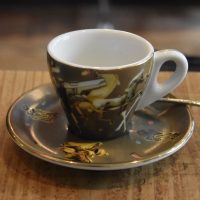 Sarutahiko Coffee in Ebisu is another places which I discovered on my first visit to Tokyo in April 2017, but never had time to write up. I first came across Sarutahiko when I found its Omotesandō branch, around the corner from my office, which shares a multi-level space with a bookshop and travel agent. This branch, opposite Ebisu train station on the Yamanote Line (amongst others) is very different, being a stand-alone shop, but it shares the two winning factors from the Omotesandō branch: excellent coffee and, in a culture where service is king, uber-friendly and welcoming staff. In fact, even if I didn’t like the coffee so much, I’d be tempted back just to see the staff.
Sarutahiko Coffee in Ebisu is another places which I discovered on my first visit to Tokyo in April 2017, but never had time to write up. I first came across Sarutahiko when I found its Omotesandō branch, around the corner from my office, which shares a multi-level space with a bookshop and travel agent. This branch, opposite Ebisu train station on the Yamanote Line (amongst others) is very different, being a stand-alone shop, but it shares the two winning factors from the Omotesandō branch: excellent coffee and, in a culture where service is king, uber-friendly and welcoming staff. In fact, even if I didn’t like the coffee so much, I’d be tempted back just to see the staff.
When it comes to coffee, Sarutahiko has one of the widest ranges of any coffee shop I know. There are six blends and six single-origins, with roasts from dark all the way to light, so there’s something for everyone. All the coffee is available as pour-over, while there’s the house-blend and a single-origin available on espresso. You can also buy retail bags of the beans, although there’s a much wider selection available in Sarutahiko’s retail shop just a few doors away.
Continue reading...Six Single-origins in a Week
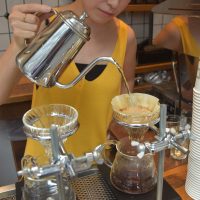 Yesterday, I wrote about About Life Coffee Brewers, a lovely coffee stand in Shibuya, next door to both my office and my hotel for the week I was working in the area. Using the rear entrance to Shibuya’s Mark City (my hotel was on top of this long, thin shopping mall) and turning right, the office was a two minute walk down the hill. However, left, if I turned left, About Life was two minutes up the hill. So, naturally, I started my day by going to About Life for coffee...
Yesterday, I wrote about About Life Coffee Brewers, a lovely coffee stand in Shibuya, next door to both my office and my hotel for the week I was working in the area. Using the rear entrance to Shibuya’s Mark City (my hotel was on top of this long, thin shopping mall) and turning right, the office was a two minute walk down the hill. However, left, if I turned left, About Life was two minutes up the hill. So, naturally, I started my day by going to About Life for coffee...
One of the frustrations of being a coffee blogger is that I rarely go back to places on a regular basis, nor do I get to sample the full range of coffee on offer, particularly somewhere like About Life, which has six single-origins available as either pour-over or espresso. However, it struck me as I ordered my two-shot latte on the first morning that there were no other decent coffee options near the office and, with two or three long breaks each day, there was every chance I could actually sample all the coffee.
So, I set myself a challenge: to try all six single-origin coffees in a week…
Continue reading...Switch Coffee Tokyo, Meguro
 This is the original Switch Coffee Tokyo, a small coffee shop in Meguro, which doubles as the roastery. That said, a better description is a roastery doubling as a coffee shop, the roaster occupying the bulk of the space at the back of the store, with a small counter at the front, where the coffee is served. There’s a second, equally small branch of Switch in Shibuya, by the Yoyogi-Hachiman station.
This is the original Switch Coffee Tokyo, a small coffee shop in Meguro, which doubles as the roastery. That said, a better description is a roastery doubling as a coffee shop, the roaster occupying the bulk of the space at the back of the store, with a small counter at the front, where the coffee is served. There’s a second, equally small branch of Switch in Shibuya, by the Yoyogi-Hachiman station.
The principle draw is the coffee, which is just as well, since other than a small selection of gin and wine, that’s all there is. No tea, no food, not even a cake. When it comes to coffee, there’s a house-blend on espresso, plus a single-origin filter, one of the four seasonal single-origins Switch has in stock. In an interesting twist on the batch-brew model, this is made in a large cafetiere then kept warm in a flask.
Continue reading...Switch Coffee Tokyo, Yoyogi-Hachiman
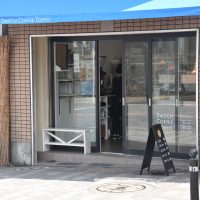 During my two visits to Tokyo, I’ve enjoyed Switch Coffee Tokyo’s coffee in both About Life Coffee Brewers, where you’ll find a pair of single-origins available as either espresso or pour-over, and Nem Coffee & Espresso, whose bespoke house-blend is roasted by Switch. However, since I’ve not yet made it down to Switch’s coffee shop/roastery in Meguro, I was delighted when the baristas at Little Nap Coffee Stand told me that Switch had opened a second branch opposite Yoyogi-Hachiman station, a mere five minutes’ walk away.
During my two visits to Tokyo, I’ve enjoyed Switch Coffee Tokyo’s coffee in both About Life Coffee Brewers, where you’ll find a pair of single-origins available as either espresso or pour-over, and Nem Coffee & Espresso, whose bespoke house-blend is roasted by Switch. However, since I’ve not yet made it down to Switch’s coffee shop/roastery in Meguro, I was delighted when the baristas at Little Nap Coffee Stand told me that Switch had opened a second branch opposite Yoyogi-Hachiman station, a mere five minutes’ walk away.
There’s not a lot to the new branch of Switch, with just the stool outside providing the only seat. Inside, it is standing-room only, with a choice of drinks from a concise espresso menu (espresso, latte or cappuccino) using Switch’s seasonal espresso blend, or batch-brew with a regularly-changing single-origin. You can also buy retail bags of beans to take home with you.
Continue reading...The Roastery by Nozy
 My first taste of Nozy’s coffee was at the lovely Nem Coffee & Espresso during my first visit to Tokyo in April 2017. I also walked past The Roastery, on Tokyo’s famous Cat Street, while taking a circuitous route back from the office, but I didn’t have time to stop. However, The Roastery was high on my must-visit list on my return, so a week ago today, I headed out early to beat the crowds, making a bee-line for The Roastery.
My first taste of Nozy’s coffee was at the lovely Nem Coffee & Espresso during my first visit to Tokyo in April 2017. I also walked past The Roastery, on Tokyo’s famous Cat Street, while taking a circuitous route back from the office, but I didn’t have time to stop. However, The Roastery was high on my must-visit list on my return, so a week ago today, I headed out early to beat the crowds, making a bee-line for The Roastery.
With the odd exception (Blue Bottle Coffee in Aoyama for example) the speciality coffee shops I’ve visited in Japan have been small. The Roastery bucks that trend, occupying a large space set back from the street, with a large outside seating area and a similarly-sized interior which doubles as a roastery, producing all Nozy’s coffee.
The coffee offering is just as big and impressive. There are no blends, just two single-origins for the limited espresso menu and another eight on pour-over, while you can buy all the beans to take home in retail bags of various sizes. There’s a small range of sweet and savoury snacks, plus perhaps the biggest draw of all in summer: soft-serve ice cream.
Continue reading...Verve Coffee Roasters, Omotesando
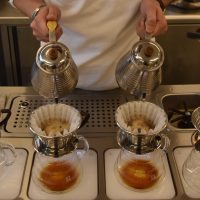 Verve Coffee Roasters started life in Santa Cruz, California, before spreading north to San Francisco, south to Los Angeles and then across the Pacific to Japan, with two branches in Tokyo and another in Kamakura. I first came across Verve as a roaster in Café Plume (now Paquebot Mont-Royal) in Montréal, before visiting Verve’s flagship branch on Pacific Avenue in Santa Cruz. The original Tokyo branch is in Shinjuku, a loud, busy place which I briefly visited in July. The second branch, subject of today’s Coffee Spot, opened in April this year. A much more relaxed basement affair under the Rag & Bone Store in Omotesando, I visited twice, first in July, and again on my return in October.
Verve Coffee Roasters started life in Santa Cruz, California, before spreading north to San Francisco, south to Los Angeles and then across the Pacific to Japan, with two branches in Tokyo and another in Kamakura. I first came across Verve as a roaster in Café Plume (now Paquebot Mont-Royal) in Montréal, before visiting Verve’s flagship branch on Pacific Avenue in Santa Cruz. The original Tokyo branch is in Shinjuku, a loud, busy place which I briefly visited in July. The second branch, subject of today’s Coffee Spot, opened in April this year. A much more relaxed basement affair under the Rag & Bone Store in Omotesando, I visited twice, first in July, and again on my return in October.
Although a basement, it’s a fairly bright spot. There’s space for a counter down one side, with seating opposite, plus a small seating area at the back. There’s the usual Verve offering, with a blend and daily single-origin on espresso, plus multiple single-origins on pour-over through the Kalita Wave. All the coffee, which is roasted in Santa Cruz and air-freighted over, is available to buy in retail bags. Meanwhile, if you’re hungry, there’s a selection of waffles, all made to order.
Continue reading...
Meanwhile, here’s the one Coffee Spot I visited on my day trip to the mountains.
& Espresso
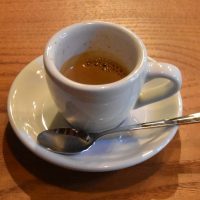 So far it’s been Tokyo, Tokyo, Tokyo on the Coffee Spot, but yesterday I escaped the heat of the city (as an aside, it’s currently Japan’s hottest ever heatwave, with Tokyo reaching a sweltering 38⁰C) for the relatively cool (~30⁰C) of the mountains of eastern Nagano Prefecture, just under a 1½ hour ride on the bullet train northwest of the capital. Here I met up with Christopher, an American who has lived in the area for around 30 years.
So far it’s been Tokyo, Tokyo, Tokyo on the Coffee Spot, but yesterday I escaped the heat of the city (as an aside, it’s currently Japan’s hottest ever heatwave, with Tokyo reaching a sweltering 38⁰C) for the relatively cool (~30⁰C) of the mountains of eastern Nagano Prefecture, just under a 1½ hour ride on the bullet train northwest of the capital. Here I met up with Christopher, an American who has lived in the area for around 30 years.
The plan was to go hiking in the mountains, but along the way, Christopher took me to the delightful & Espresso in Tomi, an area best known as the home of Maruyama Coffee, which has its roastery in nearby Komoro. Midway between Ueda and Karuizawa, & Espresso is easy enough to get to by local train, being a few minutes’ from Tanaka station.
& Espresso is the brainchild of owner and head barista, Harasawa Masanao. Opening earlier this year, it’s in a converted rice storehouse at the rear of a small parking lot, so it’s easy enough to miss. The coffee is from Kagoshima’s Voila, with a choice of two single-origins available on espresso, either black, or in a variety of milk-based options.
Continue reading...